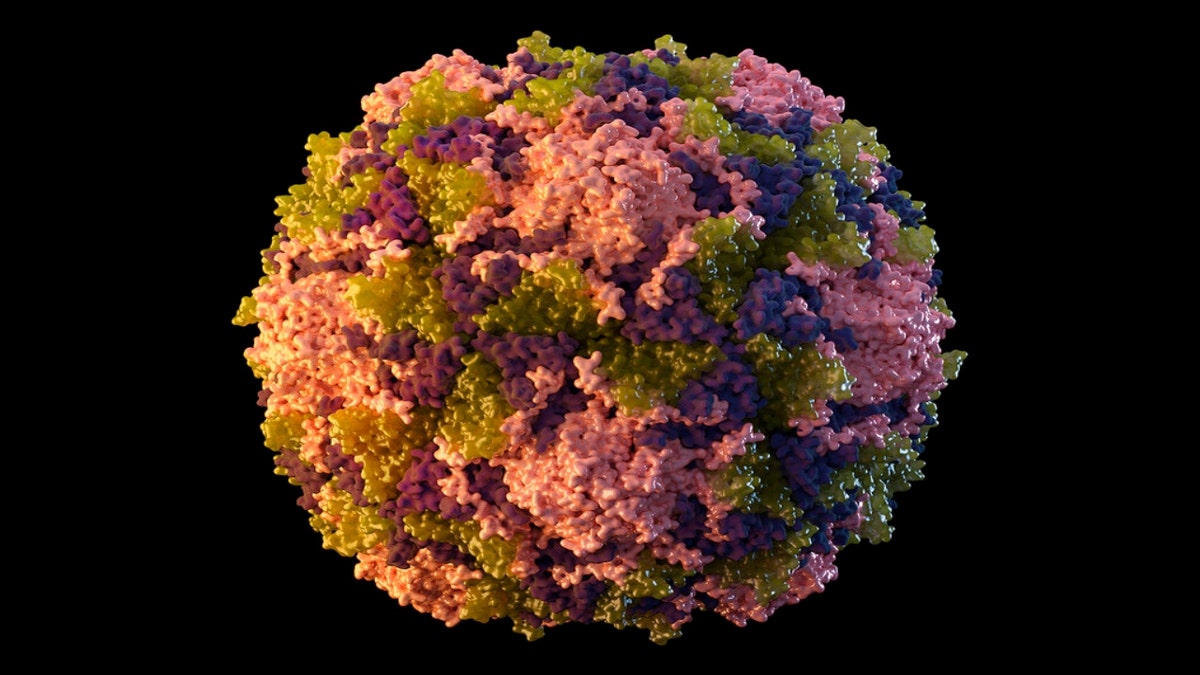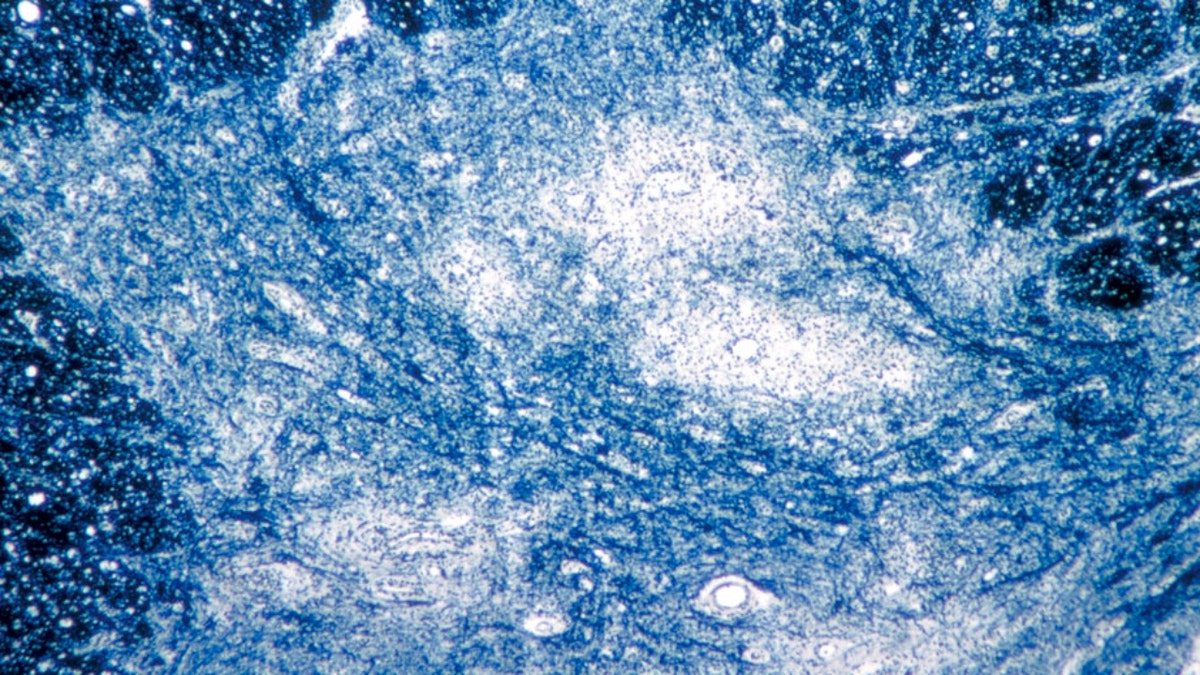The New York Department of Health on Thursday reported a case of polio in a resident of the state's Rockland County.
This case marks the first in the U.S. in nearly a decade.
The department said it was identified through sequencing at the Wadsworth Center — its public health laboratory — and confirmed by the Centers for Disease Control and Prevention (CDC).
The sequencing showed revertant polio Sabin type 2 virus.
FINANCIALLY STRAINED SEXUAL HEALTH CLINICS ARE ON THE FRONTLINE TO RESPOND TO MONKEYPOX
"This is indicative of a transmission chain from an individual who received the oral polio vaccine (OPV), which is no longer authorized or administered in the U.S., where only the inactivated polio vaccine (IPV) has been given since 2000," the department wrote. "This suggests that the virus may have originated in a location outside of the U.S. where OPV is administered, since revertant strains cannot emerge from inactivated vaccines."

This 2014 illustration made available by the Centers for Disease Control and Prevention depicts a polio virus particle. On Thursday, New York health officials reported a polio case, the first in the U.S. in nearly a decade. (Sarah Poser, Meredith Boyter Newlove/CDC via AP)
Polio is endemic in Afghanistan and Pakistan.
The New York Department of Health, the Rockland County Department of Health and the New York City Department of Health and Mental Hygiene are coordinating to continue the case investigation and "proactively respond."

This 1964 microscope image made available by the Centers for Disease Control and Prevention shows damage from the polio virus to human spinal cord tissue. (Dr. Karp/Emory University/CDC via AP)
A viral disease that can affect the nervous system and cause muscle weakness, the polio virus typically enters through the mouth.
While it is usually transmitted by hands contaminated with the fecal matter of an infected person, respiratory and oral-to-oral transmission through saliva may also occur.
Polio is very contagious, and a person can spread the virus even if they aren't sick. The majority of people infected with polio have no symptoms.
Symptoms can be mild and flu-like and can take up to 30 days to present, during which time the infected individual can spread the virus to others.
HYPERTENSION, THE SILENT KILLER: WHAT IS IT?
Although rare, some cases can result in paralysis or death.
Due to the success of the polio vaccine, introduced in 1955, cases were cut dramatically in the late 1950s and early 1960s. The last naturally occurring cases of polio in the U.S. were reported in 1979, and the last known case in the country was recorded by the CDC in 2013.
The polio vaccine is part of the required school immunization schedule for all children. According to the most recent CDC data, about 93% of 2-year-olds had received at least three doses of polio vaccine.

A nurse prepares to administer the measles, mumps and rubella (MMR) vaccine, as well as a vaccine used to help prevent the diseases of diphtheria, pertussis, tetanus and polio, at Children's Primary Care Clinic in Minneapolis on April 28, 2017. (Courtney Perry/For the Washington Post)
All of those who have not completed their polio vaccine series previously — or Rockland County members who are concerned they may have been exposed to the virus — should get vaccinated at local clinics.
People there who have already been vaccinated, who are considered to be at lower risk, but are at risk of exposure should receive a booster.
The first clinic in New York's Rockland County will be at the Pomona Health Complex on Friday from 10 a.m. to 12 p.m. ET. A second clinic at the same location will be held on Monday. Walk-ins will be accepted.
CLICK HERE TO GET THE FOX NEWS APP
Officials are advising medical practitioners and health care providers to be vigilant for additional cases.
The Associated Press contributed to this report.


